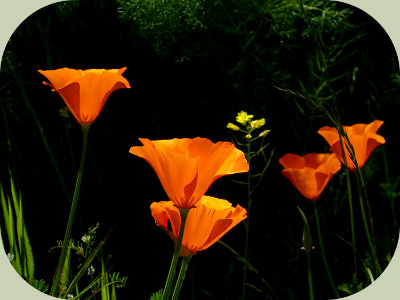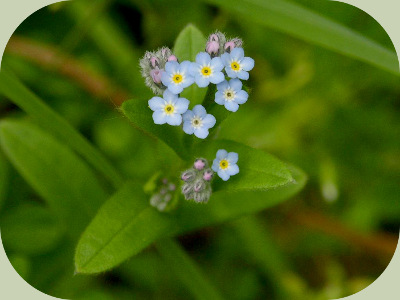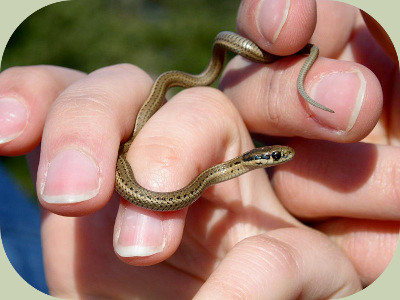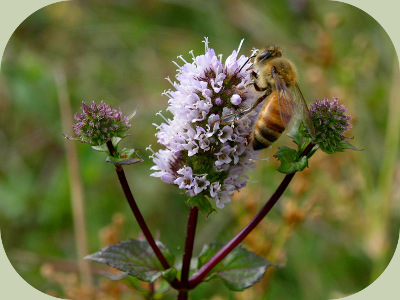Forest Food Web:
Knowledge for Designing Edible Forest Gardens

Understanding the function of a forest food web can greatly enhance your effectiveness in creating, maintaining and improving a permaculture edible forest garden (a designed community of mutually-beneficial edible, medicinal, and utilitarian plants that mimics a natural forest ecosystem).
A food web is a series of elements and organisms related by predator-prey, consumer, or resource interactions - the entirety of interrelated food chains in an ecological community. To begin, it helps to break a forest food web down to its basic parts.
The Basics of a Forest Food Web
You can begin to understand a food web by recognizing the major categories of elements and their functions. The three biggest players in a food web are the sun, water, and air. The role of the sun is to bring in energy which the producers (plants) turn into food for themselves. They then make that food available to the other members of the food web.
Clean water is vital to the life of many organisms in the food web, especially all of the plants. Forests can't exist without water. Nor can they exist without air. Plants breathe just like we do, only they breathe in carbon dioxide and breathe out oxygen. Many living things depend on the oxygen that plants breathe out.
The fourth, and most important component of a food web are the living organisms. Living organisms can be split up into three functional groups:
- Decomposers – These are the recyclers of the food web
- Producers – The plants (trees, shrubs, herbs) are the major sources of food for the food web
- Consumers – Herbivores, carnivores, and parasites
All of these groups play an important role in balancing each other and sustaining each other. When designing or improving an existing edible forest garden, use this knowledge of the forest food web to help improve the vitality of all the living things that are part of it.
Applying The Knowledge
So now that you know the elements, how can you apply the knowledge? For starters, you can consider whether all of these elements are appropriately accounted for in your edible forest garden. Let us assume that you already have sunlight, water, and air in your edible forest garden. Now the first place to look might be your soil.
The Living Soil
Keeping and supporting a living, healthy soil is key to a fruitful edible forest garden. In the forest food web, the living soil is home to many living things, but those which are decomposers are some of the most important. Two of the most important decomposers are worms and fungi. Fungi are especially good at breaking down woody materials.

Worms help turn dead leaves and other detritus into compost. Worms, especially earth worms, constantly tunnel and also aerate the soil. In poor soils, fungi can be introduced along with new plants to help improve the soil and also help plants find more nourishment. Worm castings (scat) can be used to amend poor soils.
Be More Prepared For Your Next Outdoor Adventure!

Don't leave without knowing these six essential survival skills. Our free survival mini guide reveals the strategies of:
- Shelter & fire to prevent the number one cause of death
- Obtaining clean water to avoid life-threatening dehydration
- Common wild survival foods and other critical skills!

The Producers
Plants are the main producers in a forest food web. They have complex relationships with many creatures, and it is not a simple matter of putting them in the ground and watering them. Plants have predators that include everything from tiny aphids up to large deer. In order to help plants deal with these creatures, create homes for predators of these animals.
The Consumers
The greater the diversity of plants, the more homes you create for creatures such as lady bugs, parasitic wasps, lacewings and other predators of aphids and other plant-eating insects. Learn more about the habits and needs of the predators of different plant pests and help them do what they were born to do.
For example, if you have an abundance of slugs, make habitats for toads and small snakes which often feed on slugs. You can also plant daffodils, tulips, onions and garlic species around those plants that often get browsed by large herbivores such as deer and elk. Such plants repel deer and add wonderful beneficial insect attractors to your forest food web.

Avoid using insecticides or herbicides on your edible forest garden, as these can have disastrous effects on the forest food web. They can poison your soil, water and get into your food. Often insecticides will kill off the pests along with the beneficial predators that could be keeping those same pests in check. Instead, look at what conditions allowed the given pest to thrive and help nature bring things into balance by adjusting those elements which created the situation. Things in the natural world exist in a harmonious equilibrium and the closer you look, the more you will see that the solution to your problems is likely already present on the land.
With a little encouragement and attention from you, your edible forest garden will thrive!
By the way, a big part of why we love homesteading & permaculture skills so much is because they are a natural extension of learning about wilderness survival (both fields are all about self-sufficiency and working with nature to satisfy needs). An understanding of survival not only helps you become a better permaculturist, it empowers you with life-saving outdoor skills to keep you safe when out in nature. Right now you can get a free copy of our mini survival guide here, where you'll discover six key strategies for outdoor emergencies, plus often-overlooked survival tips.
Resources:
Interested in learning about permaculture approaches to sustainable living, such as edible forest gardens? Check out our Permaculture Courses.
To read more about edible forest gardens, check out our article on How to Create a Permaculture Food Forest.
For further useful information check out Mother Earth News' article: Plant an Edible Forest Garden


About the Author: Filip Tkaczyk is a periodic guest teacher at Alderleaf. He also wrote the field guide Tracks & Sign of Reptiles & Amphibians. Learn more about Filip Tkaczyk.
Return from Forest Food Web back to Wilderness Articles
Is The Essential Wilderness Survival Skills Course Right for You? Take the "Online Survival Training Readiness" Quiz
See for yourself if this eye-opening course is a good fit for you. It takes just a few minutes! Get your Survival Training Readiness Score Now!

Grow Your Outdoor Skills! Get monthly updates on new wilderness skills, upcoming courses, and special opportunities. Join the free Alderleaf eNews and as a welcome gift you'll get a copy of our Mini Survival Guide.

 The Six Keys to Survival: Get a free copy of our survival mini-guide and monthly tips!
The Six Keys to Survival: Get a free copy of our survival mini-guide and monthly tips!
Learn more